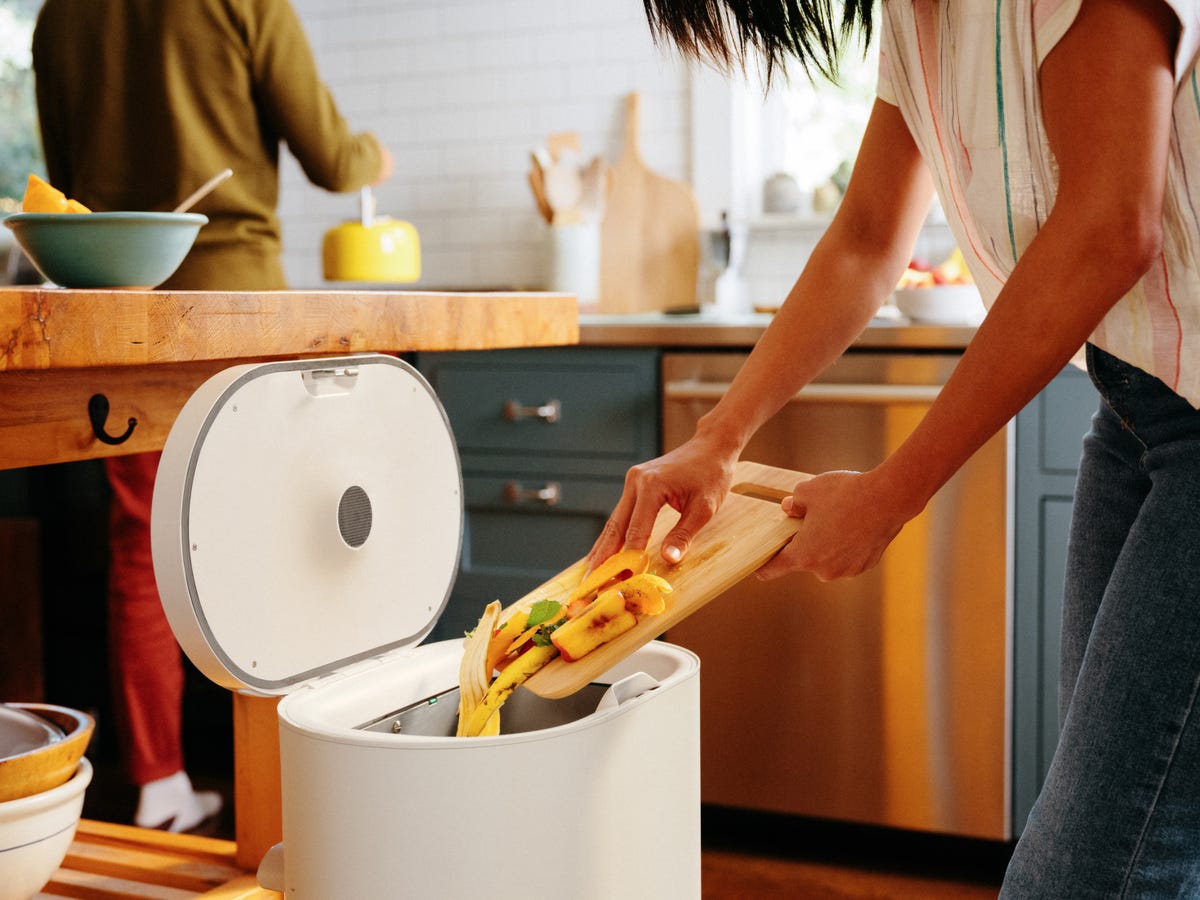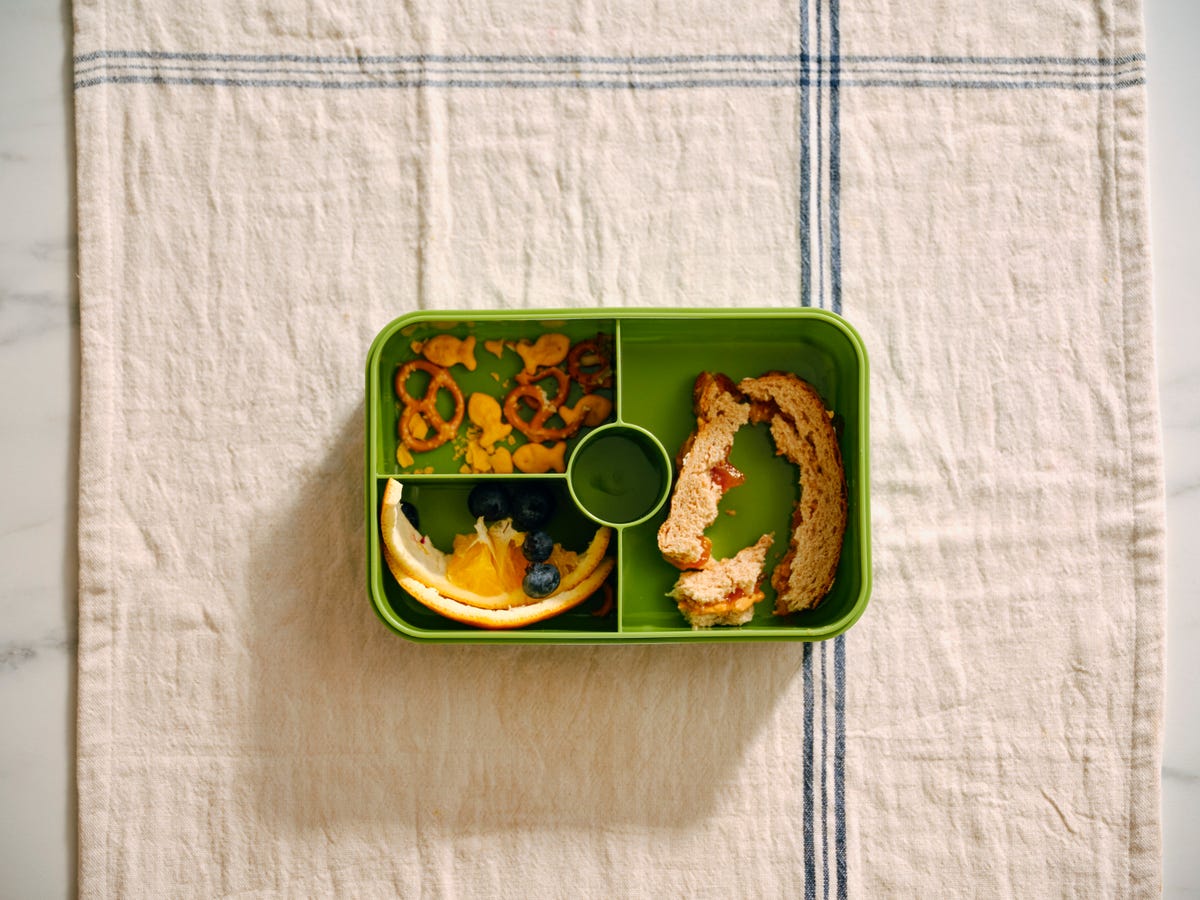Composting Is So Over. This New Bin Turns Kitchen Scraps Into Chicken Feed
Food waste probably isn’t the first or even second image conjured when we consider our impact on the environment and climate change, but perhaps it should be. The sheer volume of food tossed away is dispiriting — 119 billion pounds per year in the US alone — and results in more greenhouse gasses emitted and food resources wasted. But Mill, a membership-based food disposal system developed by Google Nest co-founder Matt Rogers, is looking to flip the script.
Just don’t call it a compost bin.
Mill is an electric kitchen waste bin that shrinks and de-stinks typical kitchen food scraps in the span of several hours, turning them into usable food grounds. Those grounds are returned to Mill, processed into chicken feed and dispersed to farms. (Hey, maybe this will finally bring down those egg prices.) The idea is to keep food out of landfills, where it produces harmful greenhouse gas, and also to recirculate it back into the system so the totality of what’s produced goes further.
Read more: Lomi Countertop Composter Review: An Easy, Clean Way to Compost at Home
“Food in landfills is one of the most solvable climate problems facing us today,” Mill co-founder and president Harry Tannenbaum said in a release announcing the launch last week. “At Mill, we’re building a pathway to connect what people can’t eat at home with farms that benefit from a more sustainable feed ingredient.”
How the Mill kitchen bin system works

Your $33 each month covers the cost of shipping food grounds back to Mill to be processed into chicken feed.
Mill
Got a surplus of scraps and uneaten food? Of course you do. Chuck them in the Mill kitchen bin, and overnight, Mill breaks down food scraps and turns them into condensed, usable grounds. You can monitor the progress from your mobile app or visually. When the bin starts to fill up, empty the bucket into a prepaid shipping box and send your grounds back to Mill.
A big draw is that you can mill just any food, including some that aren’t suitable for composting, such as meat, dairy and cooked foods. Mill is also intended to remove the odor from discarded food as it breaks down, leaving you with something that more closely resembles crumbly soil than funky compost.

The Mill kitchen bin turns food scraps into usable grounds to be processed into chicken feed
Mill
In theory, if you wanted to use the grounds in your garden, you can. But Mill doesn’t produce nutrient-rich compost; rather it produces food that’s been dried out and ground down. Would-be composters would need to rewet the material before use, and it still may not deliver the same results as traditional compost. Plus, any food not typically suitable for compost — dairy, oil, meat — could have adverse effects on your radishes and rhododendron.
You’ll pay $33 a month to help the planet

For $33 a month you’ll get the Mill kitchen bin, free return shipping on your processed grounds and eco-friendly bragging rights.
Mill
This part that may give pause to those looking to employ this otherwise sound and sustainable system. While the device itself has no upfront cost, Mill carries a $33 a month subscription fee when you pay for a year in advance — $396 total. This covers the bin, shipping boxes and delivery cost back to Mill for processing, but it’s a hefty price for something with no immediate or tangible benefits. Go month-to-month, and Mill will cost you $45 a month, plus $75 upfront to have the bin shipped.
For existing composters or those looking to start, Mill likely won’t make much sense, since you already have a solution for food waste that costs nothing and benefits your garden. For those who can’t compost or have no use for it, Mill presents an eco-friendly option for minimizing that pesky carbon footprint and reducing food waste.
Mill is currently accepting memberships. Spots are “limited,” according to the website. We plan to test the new kitchen bin and will issue a full take once we do.
Food waste’s environmental cost

Each year, roughly $119 billion pounds of food is wasted and sent to landfills. Mill has other plans.
Mill
According to data from the Environmental Protection Agency, food waste is the single most common material landfilled and incinerated in the US, comprising 24% of landfilled waste and 22% of combusted municipal solid waste. All those food scraps in the landfill result in some ugly emissions, including carbon dioxide and methane gas. This uneaten food means wasted resources, too, including agricultural, water, land, pesticides, fertilizers and energy.
If you’re interested in composting, we’ve got a step-by-step guide for building a worm farm — it’s less gross than you think, and has a lot of benefits.
For all the latest world News Click Here

